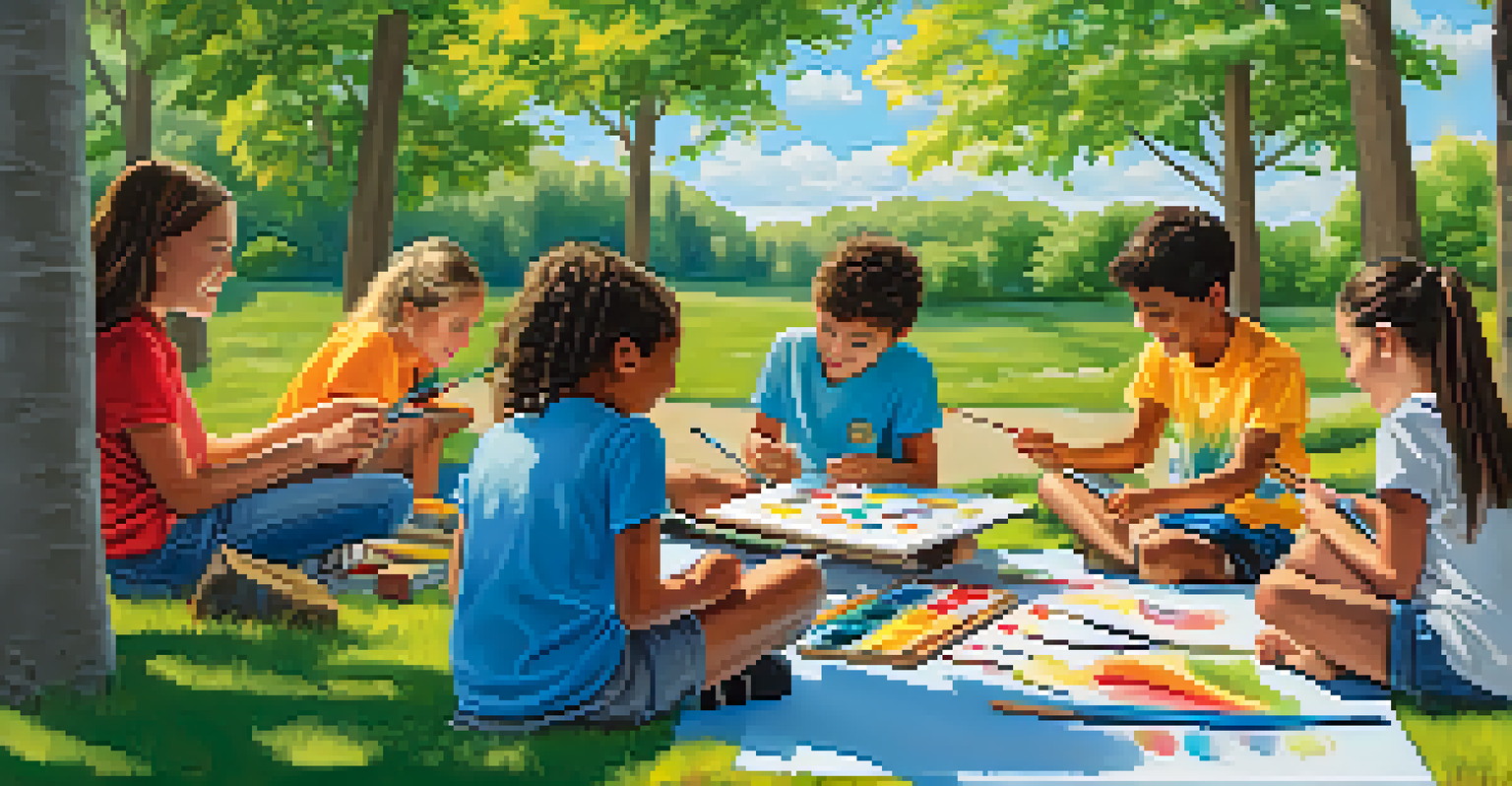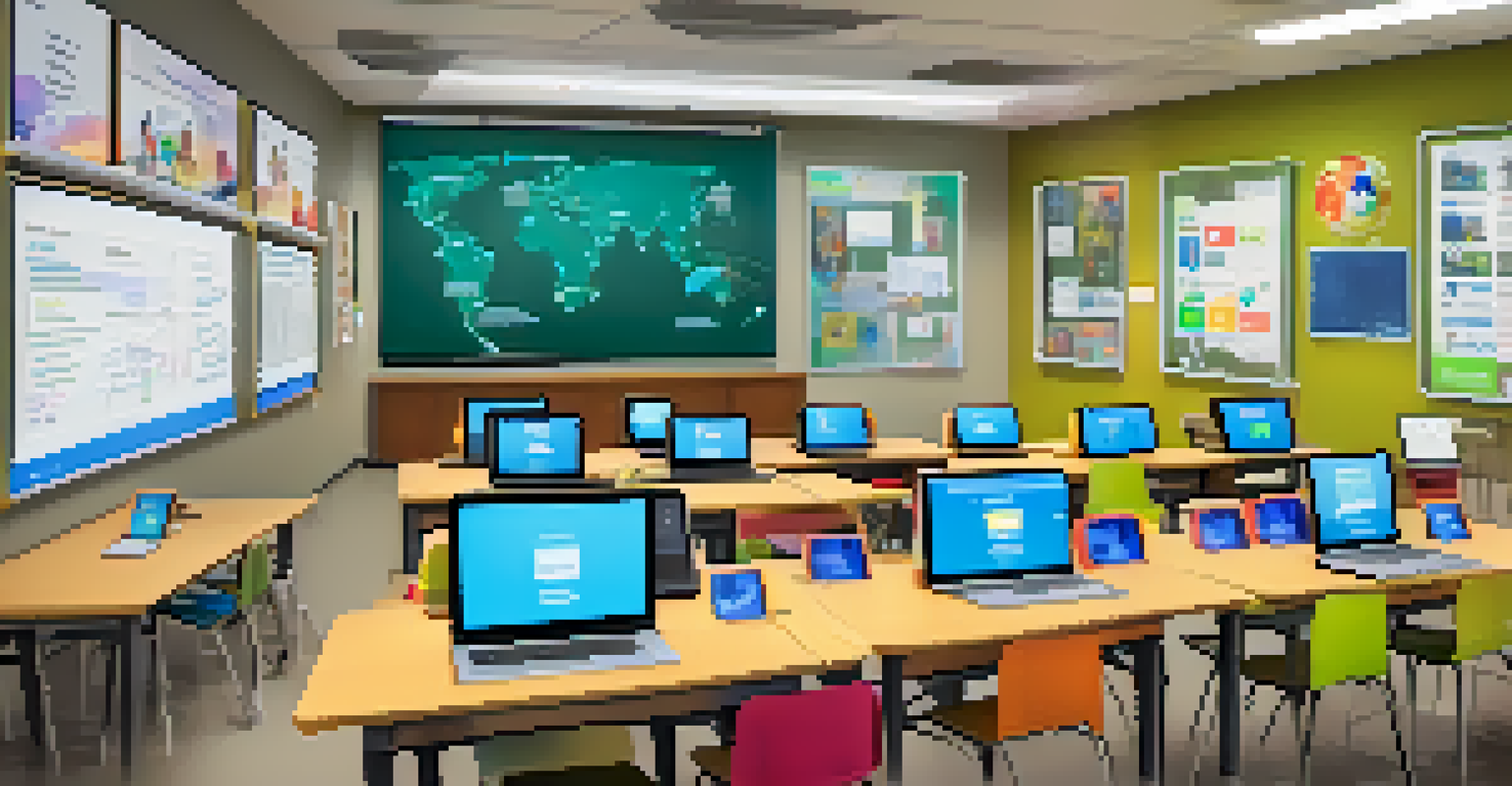Enhancing Literacy Skills Through Interdisciplinary Learning

Understanding Interdisciplinary Learning in Education
Interdisciplinary learning involves combining subjects to create a richer educational experience. By blending areas like science, art, and language, students can make connections that deepen their understanding. For instance, a lesson on ecosystems can incorporate writing assignments about environmental issues, showcasing how subjects intertwine.
Education is not the filling of a pail, but the lighting of a fire.
This approach not only fosters critical thinking but also engages students more fully. When they see the relevance of what they're learning, their motivation can skyrocket. Imagine a classroom where math and history come together to analyze historical data; the possibilities are endless!
Ultimately, interdisciplinary learning illuminates the pathways between different fields. It encourages students to think beyond traditional boundaries, leading to a more holistic grasp of concepts and improved literacy skills across subjects.
The Role of Literacy in Interdisciplinary Learning
Literacy isn't just about reading and writing; it's about understanding and communicating ideas effectively. In an interdisciplinary setting, literacy skills are essential for students to express their insights across various subjects. Whether it’s through a lab report or a creative project, strong literacy underpins success.

When students engage in interdisciplinary learning, they practice literacy in diverse contexts. For example, they might read a historical novel while studying the same period in social studies, enhancing comprehension through multiple lenses. This not only solidifies their understanding but also enhances their ability to articulate thoughts clearly.
Interdisciplinary Learning Enhances Engagement
By combining subjects like science and art, students find learning more relevant and motivating.
Moreover, promoting literacy in this way helps students become adaptable communicators. They learn to tailor their language and style depending on the subject matter, making them more versatile learners in the long run.
Benefits of Interdisciplinary Learning for Literacy Development
One major benefit of interdisciplinary learning is that it makes literacy more engaging. Students often find traditional methods tedious, but when they can relate reading and writing to real-world scenarios, their interest peaks. For instance, writing a persuasive essay on climate change during a science unit sparks passion and relevance.
The whole is greater than the sum of its parts.
Additionally, this method encourages collaboration among students, which is crucial for developing communication skills. Group projects that require research and presentation foster a sense of teamwork and shared responsibility. The collective effort to articulate ideas enhances everyone's literacy skills.
In essence, interdisciplinary learning transforms the literacy experience into something dynamic and interactive. Students are not just passive recipients of information; they become active participants in their education.
Real-World Examples of Interdisciplinary Literacy Programs
Many schools are successfully implementing interdisciplinary programs that enhance literacy. For example, a school might integrate a project that combines art and literature, where students create visual representations of their favorite stories. This hands-on approach not only strengthens their reading skills but also allows for creative expression.
Another example is the use of technology in interdisciplinary learning. Programs that merge coding with creative writing teach students how to tell stories through digital media, combining literacy with design and technology skills. This prepares them for the demands of the modern workforce.
Literacy Skills Are Crucial in Learning
Strong literacy underpins success in interdisciplinary settings, allowing students to express insights across various subjects.
These real-world applications demonstrate that interdisciplinary learning is not just theoretical; it’s a practical way to enhance literacy in engaging and meaningful ways.
Strategies for Implementing Interdisciplinary Learning
Implementing interdisciplinary learning requires careful planning and collaboration among educators. Teachers can start by identifying overlapping themes in their curriculum. For instance, a unit on the solar system could incorporate science, math, and art, allowing students to explore the topic from various angles.
Professional development for teachers is also essential in this process. Workshops that focus on interdisciplinary strategies can provide educators with the tools they need to effectively integrate subjects. Sharing successful practices among teachers fosters a culture of collaboration and innovation.
Ultimately, the goal is to create a seamless learning experience that nurtures literacy through interconnected subjects. With the right strategies, educators can transform their classrooms into vibrant learning environments.
Assessing Literacy Skills in an Interdisciplinary Context
Assessment in an interdisciplinary framework differs from traditional methods. Instead of isolated tests, educators can evaluate student understanding through projects that require them to integrate skills from various disciplines. This provides a more comprehensive picture of their literacy abilities.
For example, a project might ask students to research a historical event and present it through a multimedia presentation. This not only tests their research and writing skills but also their ability to communicate effectively using different formats. It's a holistic approach to assessment.
Real-World Applications Boost Literacy
Hands-on projects, such as integrating art and literature, make literacy more engaging and meaningful for students.
By assessing literacy in context, teachers can identify areas for improvement and celebrate student achievements more meaningfully. This approach aligns assessment with real-world applications, reinforcing the importance of literacy skills across disciplines.
Future Directions for Interdisciplinary Literacy Education
As education continues to evolve, the integration of interdisciplinary approaches is becoming more prevalent. Future directions may include more project-based learning that emphasizes real-world problem solving. This hands-on learning can significantly enhance literacy skills as students navigate complex issues.
Additionally, technology will play a crucial role in shaping interdisciplinary learning. Digital platforms can offer new ways for students to collaborate, share ideas, and showcase their work. This not only enriches the learning experience but also prepares students for a tech-driven world.

In conclusion, the future of literacy education lies in embracing interdisciplinary methods. By continuing to innovate and adapt, educators can foster a generation of critical thinkers and effective communicators.